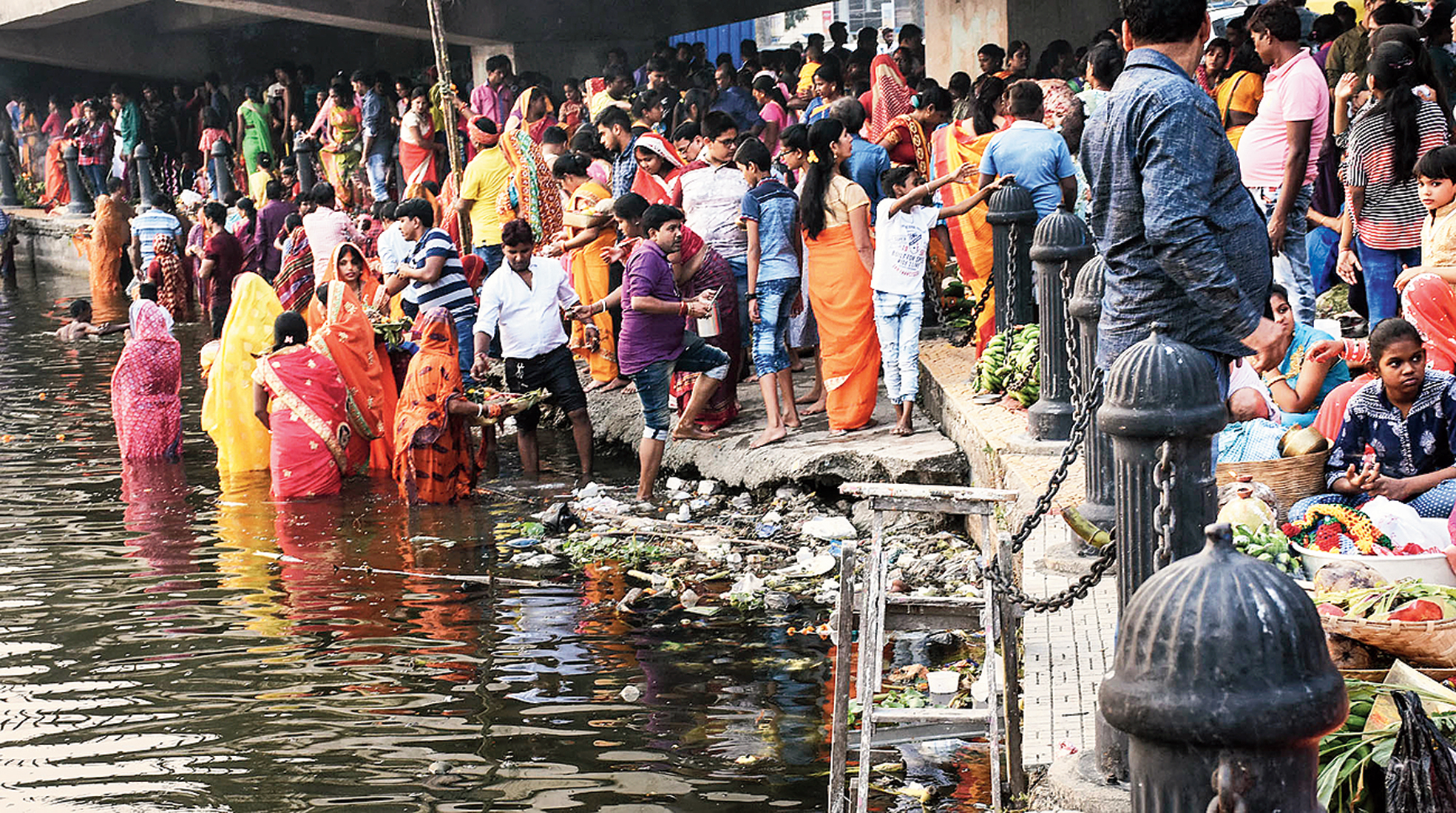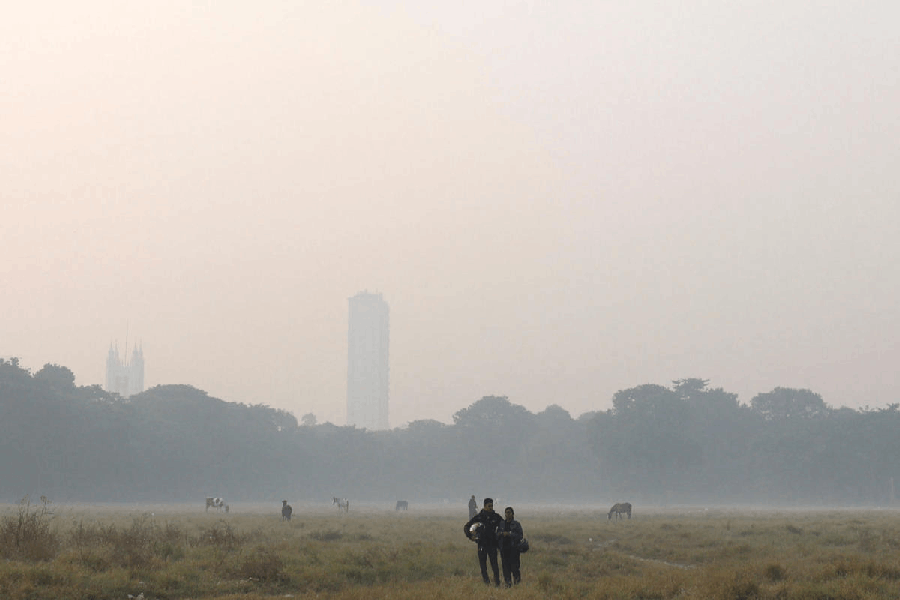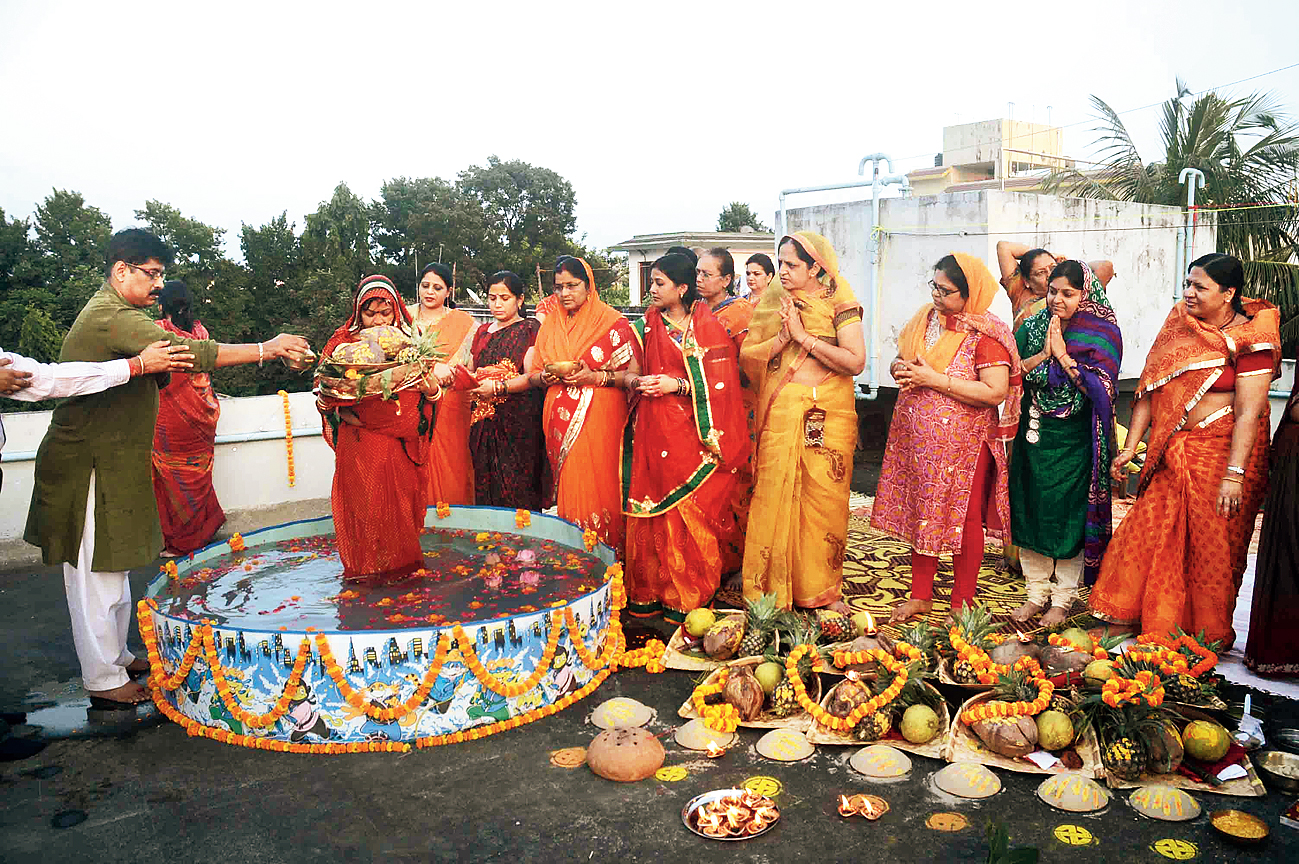
Telegraph file picture
Subhas Sarobar, the lungs of the eastern part of the city, had to suffer huge environmental stress as thousands observed Chhath puja within the water body; arguably many notches higher than its southern counterpart Rabindra Sarobar which enjoys legal insulation from the National Green Tribunal.
Subhas Sarobar, a sprawling water body and green verge off EM Bypass, virtually turned into a floating garbage heap as thousands — more compared to earlier years as Rabindra Sarobar in south Calcutta was legally barred — observed Chhath puja at the bank of the lake and put all puja-related offerings into the water with the administration turning a blind eye. Bursting of high decibel crackers accompanied the celebration with scant regard for the Supreme Court’s order limiting the timing to 8 to 10 pm, taking a toll on the resident birds in the park.
Such high rate of bursting crackers also contributed in creating local level air pollution, which remained stagnant for a long time in absence of much wind flow.
But water pollution was many times greater. “During the evening, thousands of devotees offered puja at the bank of the water body with bananas, sugar canes and other fruits and then took a bath. Moreover they were putting lamps and other puja offerings in the lake. On November 13 and 14, the lake turned it into a garbage dump,” said environment activist Naba Dutta , who visited Subhas Sarobar during Chhath puja.
Datta feels that the amount of water and soil pollution on the days at Subhas Sarobar was much more than at Rabindra Sarobar though the latter garnered more attention because of the National Green Tribunal order violation in Chhath being performed in presence of police.
A PCB official pointed out that suspended solids in water increase enormously as a result of the bathing of thousands.
“Such an event contributes to water pollution in various ways. Firstly, BOD (Biological Oxygen Demand) level increases with the increase of organic matter in water due to so many bathing and also due to mixing of fruits etc into water; secondly, addition of oil and grease poured into lake as part of puja offerings reduces oxygen transfer in the water which may affect the lives of aquatic animals,” explained Arunabha Majumder, an emeritus professor of Jadavpur University and a resident of AA Block in Salt Lake.
It’s no coincidence that The Telegraph Salt Lake found a number of dead snails and clams floating in Subhas Sarobar the day after Chhath puja.
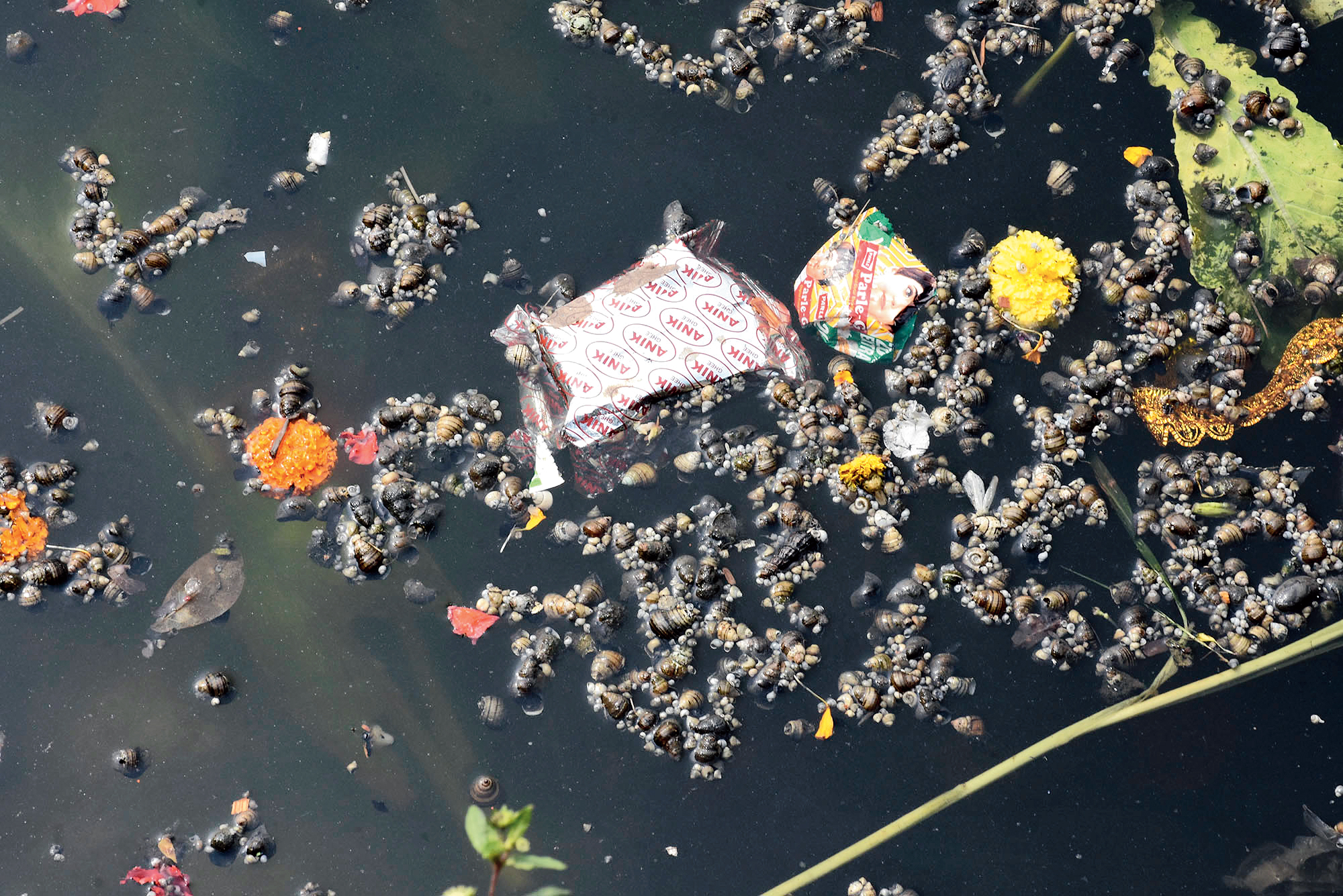
Snails float on the water surface the day after Chhath puja Mayukh Sengupta
Showing an alternative way
While most devotees flock to lakes and rivers, there are some who perform Chhath at home, in a conscious bid to spare the environment and avoid the crowd. One such family is the Bhushans of DL Block.
When the Bhushans moved into DL Block in the 90s they would head to Subhas Sarobar for Chhath puja. “But the water was polluted. We started getting rashes and a shard of glass even pierced my wife’s foot,” says Shashi Bhushan.
So from 2000, they started performing the puja at home. They did it on their terrace and used an inflatable baby pool to create a water body (A file picture dating back to 2013 above). The idea worked so well that nearly 30 families started coming over for the puja every year. The Bhushans are now stationed in Bhubaneshwar temporarily and even there they perform Chhath at home.
In Bihar and Jharkhand, home pujas are becoming so popular that most houses have reservoirs built for the purpose. “This is not possible for say, labourers in Calcutta, who live in small quarters. So when they visit lakes for the pujas, they leave behind diyas, flowers, fruit peels...” says Bhushan. “It would be great if temporary pools can be set up in parks. If local residents perform pujas there, they would be accountable to clean up afterwards too.”
As told to Brinda Sarkar
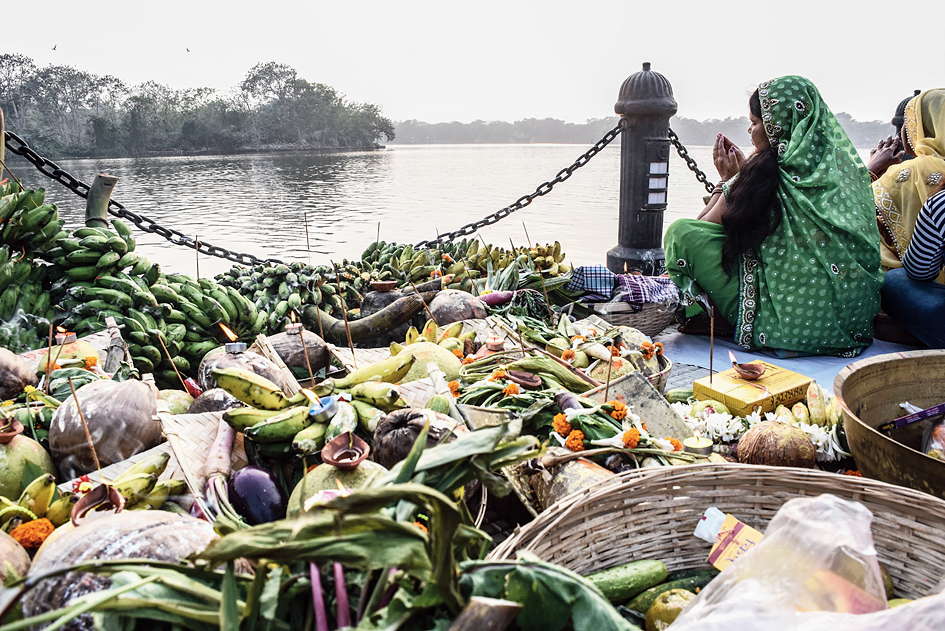
A devotee prays with offerings seated by Subhas Sarobar Mayukh Sengupta

Women pour milk into the waterbody as part of the ritual Picture by Mayukh Sengupta
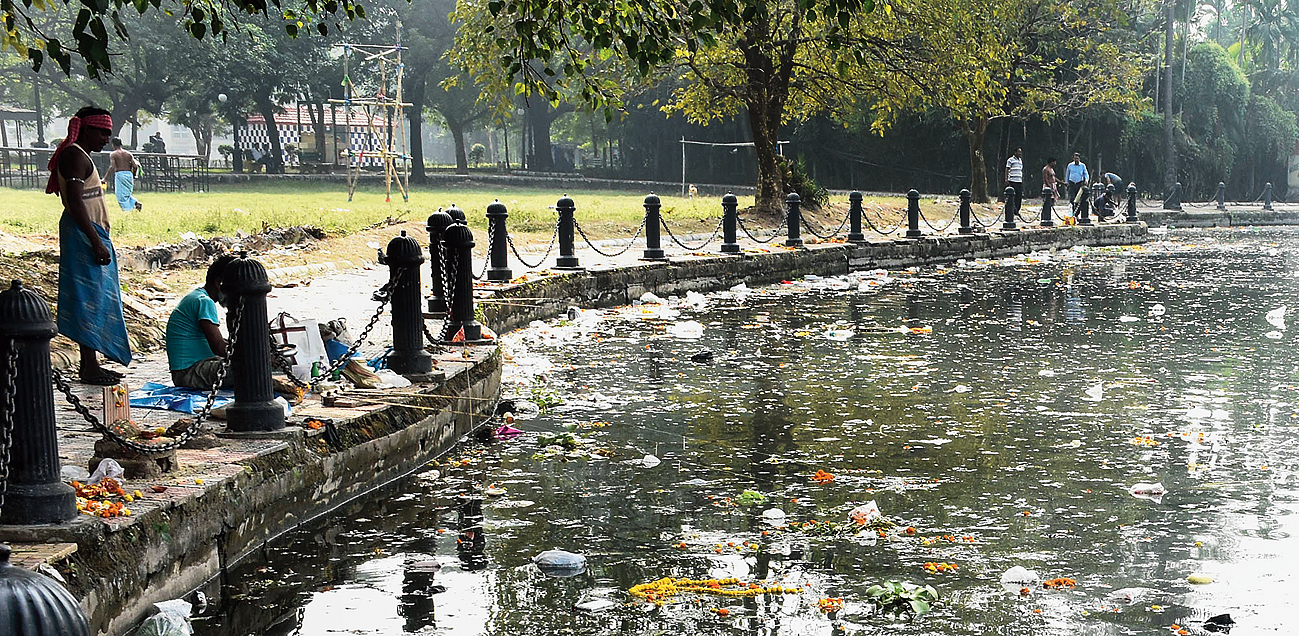
Anglers take position by a dirty waterbody the day after Chhath puja Mayukh Sengupta
What we saw
The Telegraph Salt Lake also witnessed the tell-tale signs of environmental damages due to the massive mauling Subhas Sarobar had to suffer both during the puja and afterwards.
The organising clubs and police were heard making announcements to not burst crackers and throw flowers in the water but few bothered to pay heed. Youngsters were seen bursting crackers as soon as the volunteers were out of sight.
“We are constantly asking everyone not to toss offerings in the water and dispose of them in the designated areas and not to burn crackers as we were asked to abide by these guidelines by the police before they gave us permission to organise puja here. Our volunteers are guiding people to the sides which are safe to take a bath in,” said Deepak Hari, secretary of Narkeldanga Sevak Nagar Naba Yubak Brinda, one of the many clubs organising puja in Subhas Sarobar.
The day after, plastic packets, empty packets of sky lanterns, incense sticks, cups and flowers were left strewn on the ground while oil, flowers, uprooted plants from the bank sides and plastic bags were seen floating in the water.
The West Bengal Anglers Association, which is responsible for looking after the water in the Sarobar, had called 15 fishermen from Bongaon to clean the water and the banks of the lake the day after. “We are responsible for the water while municipality is responsible for the grounds. We are trying to do our best to make this area, particularly the water body, clean as soon as possible,” said Bhajan Das, an official of the anglers association, who lamented how the number of devotees performing Chhath puja has been increasing year on year.
Devotees, however, were happy to have a place nearby for their puja. “Chhath is very special for us and this is one big lake in the area where we can offer puja as these rituals are to be done in the open and in big water bodies,” said Shakuntala Mahanto of FC Block, who had no clue about the environmental impact.
Green activists point out that Subhas Sarobar enjoys huge biodiversity and such high environmental stress within a short period can trigger significant harm to its ecosystem, both land and aquatic. “Calcutta has already lost a huge number of waterbodies, and has less open space and fewer water bodies compared to any modern city. If we start to impact even those, the city’s environmental quality and even drainage will be at rick which may prove to be disastrous in this age of rapid climate change and warming,” they point out.

